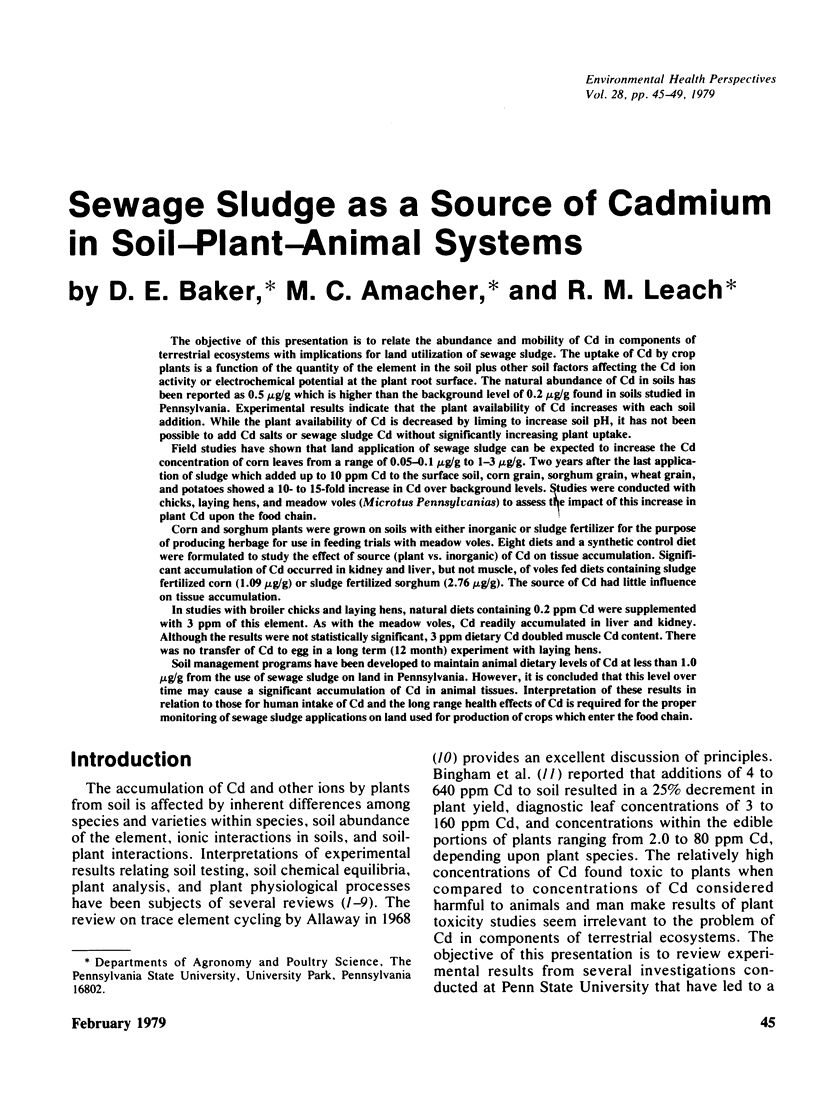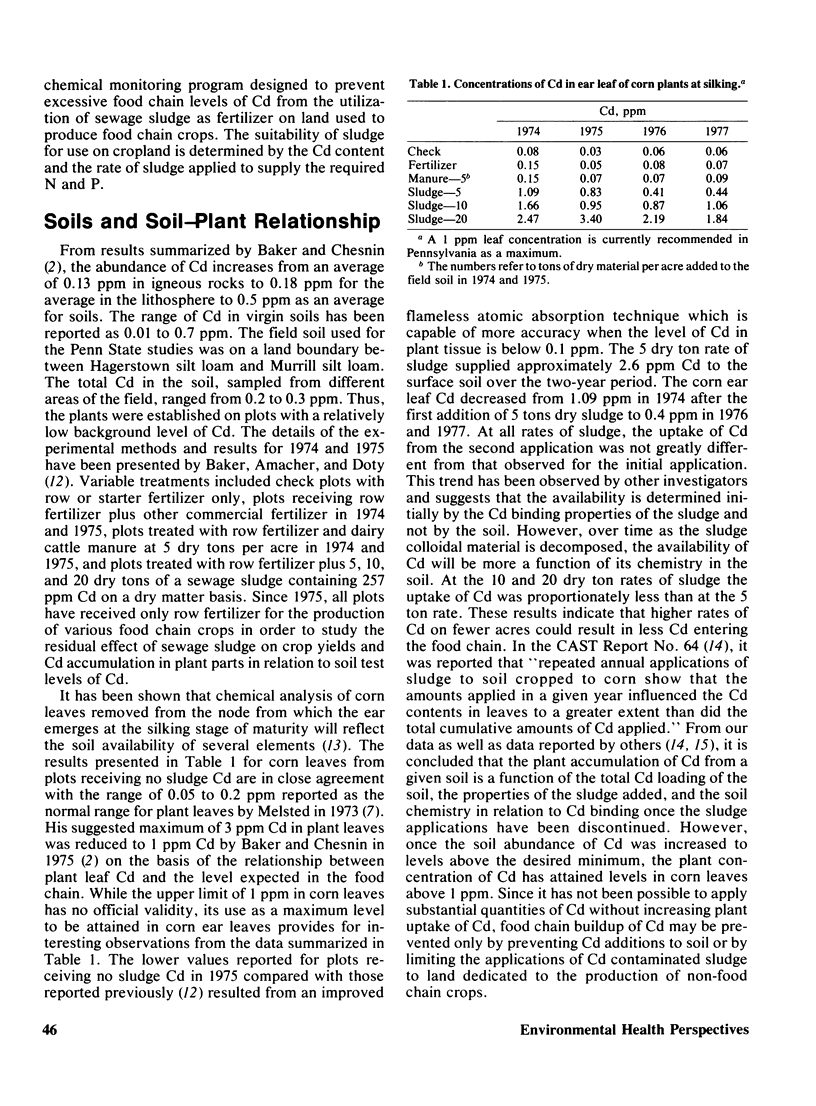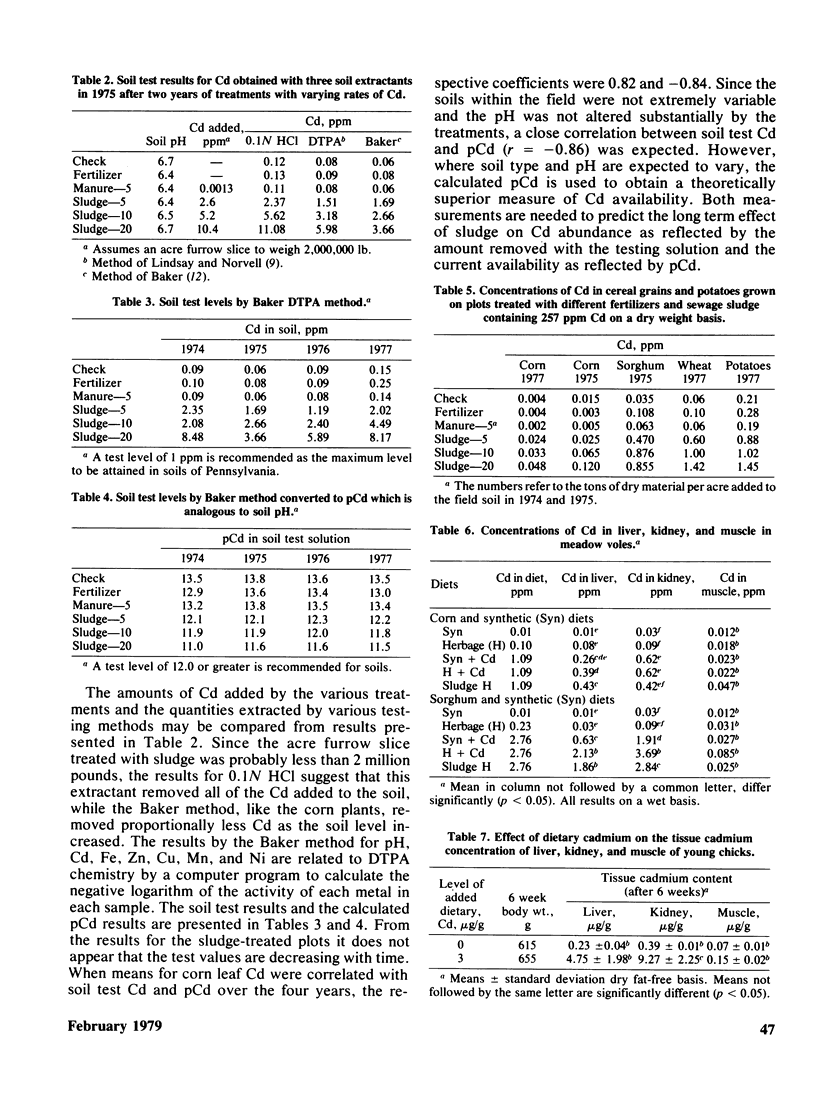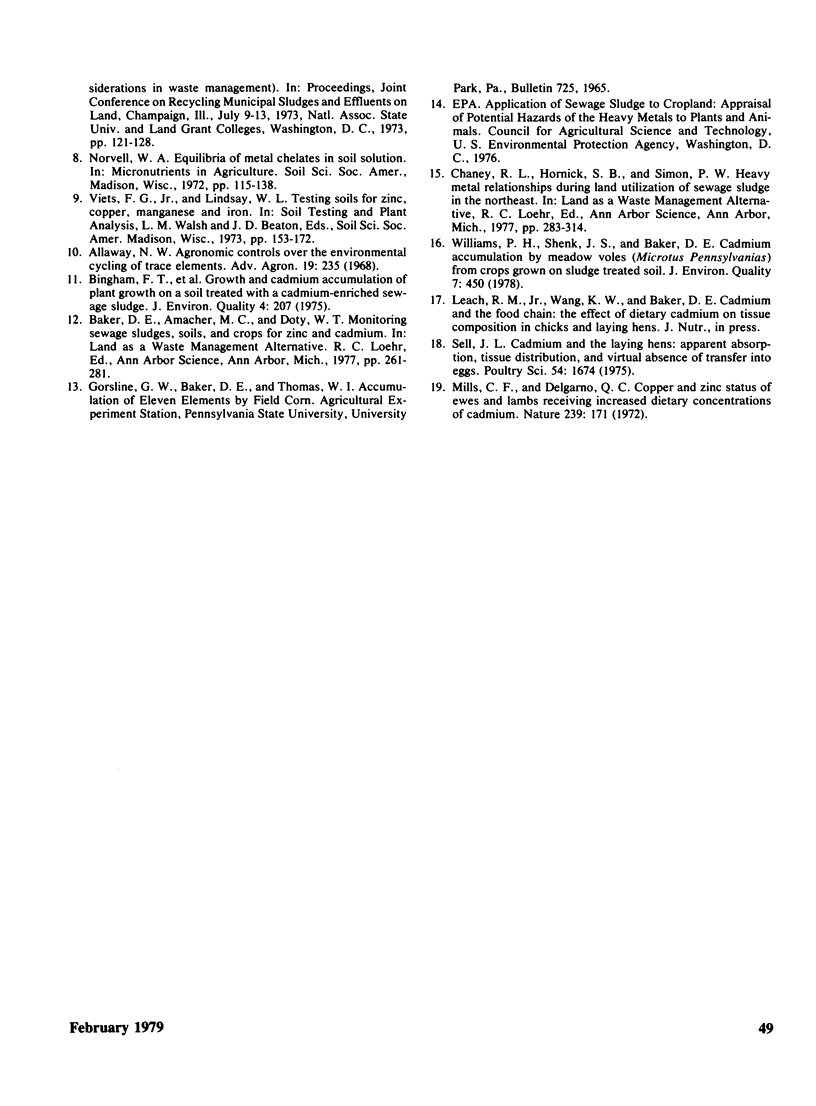Abstract
The objective of this presentation is to relate the abundance and mobility of Cd in components of terrestrial ecosystems with implications for land utilization of sewage sludge. The uptake of Cd by crop plants is a function of the quantity of the element in the soil plus other soil factors affecting the Cd ion activity or electrochemical potential at the plant root surface. The natural abundance of Cd in soils has been reported as 0.5 μg/g which is higher than the background level of 0.2 μg/g found in soils studied in Pennsylvania. Experimental results indicate that the plant availability of Cd increases with each soil addition. While the plant availability of Cd is decreased by liming to increase soil pH, it has not been possible to add Cd salts or sewage sludge Cd without significantly increasing plant uptake.
Field studies have shown that land application of sewage sludge can be expected to increase the Cd concentration of corn leaves from a range of 0.05–0.1 μg/g to 1–3 μg/g. Two years after the last application of sludge which added up to 10 ppm Cd to the surface soil, corn grain, sorghum grain, wheat grain, and potatoes showed a 10- to 15-fold increase in Cd over background levels. Studies were conducted with chicks, laying hens, and meadow voles (Microtus Pennsylvanias) to assess the impact of this increase in plant Cd upon the food chain.
Corn and sorghum plants were grown on soils with either inorganic or sludge fertilizer for the purpose of producing herbage for use in feeding trials with meadow voles. Eight diets and a synthetic control diet were formulated to study the effect of source (plant vs. inorganic) of Cd on tissue accumulation. Significant accumulation of Cd occurred in kidney and liver, but not muscle, of voles fed diets containing sludge fertilized corn (1.09 μg/g) or sludge fertilized sorghum (2.76 μg/g). The source of Cd had little influence on tissue accumulation.
In studies with broiler chicks and laying hens, natural diets containing 0.2 ppm Cd were supplemented with 3 ppm of this element. As with the meadow voles, Cd readily accumulated in liver and kidney. Although the results were not statistically significant, 3 ppm dietary Cd doubled muscle Cd content. There was no transfer of Cd to egg in a long term (12 month) experiment with laying hens.
Soil management programs have been developed to maintain animal dietary levels of Cd at less than 1.0 μg/g from the use of sewage sludge on land in Pennsylvania. However, it is concluded that this level over time may cause a significant accumulation of Cd in animal tissues. Interpretation of these results in relation to those for human intake of Cd and the long range health effects of Cd is required for the proper monitoring of sewage sludge applications on land used for production of crops which enter the food chain.
Full text
PDF




Selected References
These references are in PubMed. This may not be the complete list of references from this article.
- Baker D. E. Coppper: soil, water, plant relationships. Fed Proc. 1974 May;33(5):1188–1193. [PubMed] [Google Scholar]
- Mills C. F., Dalgarno A. C. Copper and zinc status of ewes and lambs receiving increased dietary concentrations of cadmium. Nature. 1972 Sep 15;239(5368):171–173. doi: 10.1038/239171a0. [DOI] [PubMed] [Google Scholar]
- Sell J. L. Cadmium and the laying hen: apparent absorption, tissue distribution and virtual absence of transfer into eggs. Poult Sci. 1975 Sep;54(5):1674–1678. doi: 10.3382/ps.0541674. [DOI] [PubMed] [Google Scholar]


